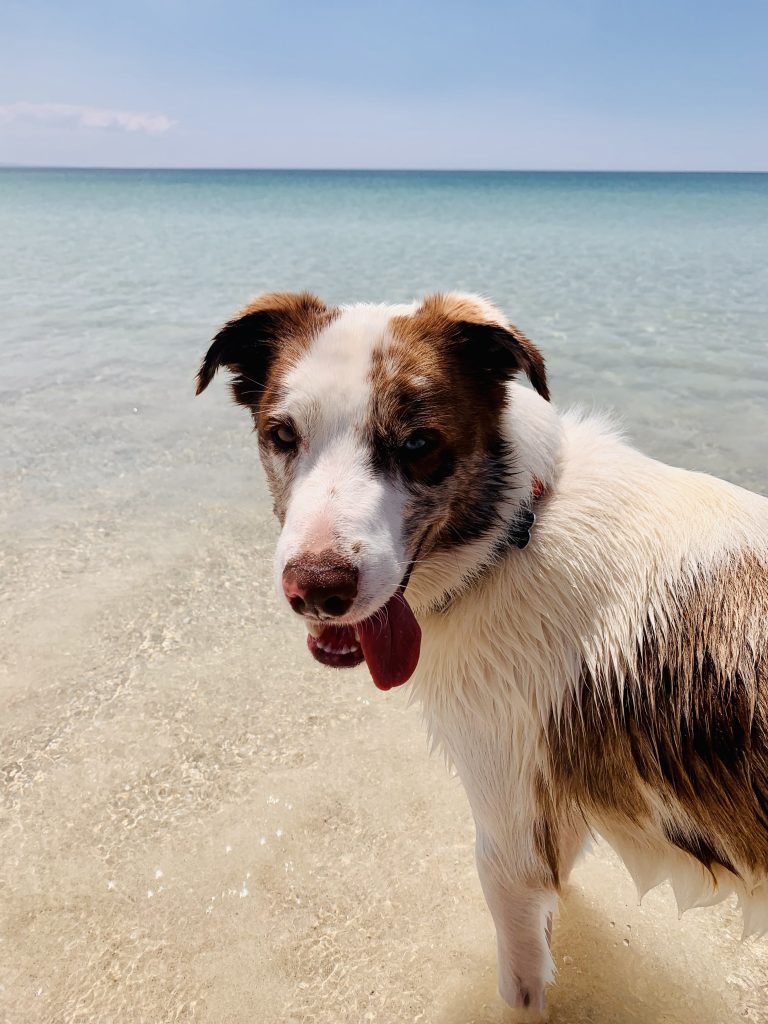The first summer, or the season of the young
Birak season sees the rains ease up and the warm weather really start to take hold, which means it’s beach time! And for us and our dwert (dog), the beach is the best place in the whole world.
There is plenty of seafood available at this time of year. Traditionally, this formed a large part of the warm weather diet as many Nyungar people would move back to the coast at this time of the year. Not a lot has changed now, with fishing, crabbing and diving still a favourite activity for our moort (family).
Despite the heat and decreasing rainfall at this time of year, there is still an abundance of other food and traditionally, this was aided through the use of karl (fire). Nyungar people would burn the country in cool, mosaic patterns. They would burn the country in this way for several reasons, including fuel reduction, increasing the grazing pastures for animals like the yonga that they would then hunt with gidjies (spears) and hunting kylies (boomerangs), to aid in seed germination for edible plant species, and for improve access to travel across Country.
Sound risky? Nope, not at all. They knew what they were doing. An almost clockwork pattern of easterly winds in the morning and sool south-westerly sea breezes in the afternoon were ideal conditions and of course, they knew the boodja (country/land) like the back of their hands and could guide the trickling flames wherever they wanted it to go.
This season is signalled by a mass of stunning and unmistakable golden yellow-orange flowers across the landscape, with the moodjar (WA native Christmas tree or Nuytsia floribunda) bursting into full bloom. This tree is very important to Nyungar people culturally and is fascinating ecologically, being a root hemiparasite (a plant that is parasitic under natural conditions, but photosynthetic to some degree) and mainly obtaining water and mineral nutrients from its hosts.
As for the animals, there are many fledgling birds now venturing out of nests, though still staying close to their parents. Reptiles are looking to shed their old skins for new ones. With the rising temperatures and the decreasing rainfall, it’s also time for the baby kooyar (frogs), to complete their transformation into adulthood.
Given that it is the season of the young, we’d like to give a shout out to our fellow dog owners who’s fur babies love the beaches of Nyungar boodja like ours does. Be sure to keep an eye out for juvenile coastal birds that spend a lot of time on the ground in the foredunes and the beach, like the hooded-plover and the oyster catcher. While dogs might think it’s fun to investigate them or give them a bit of a chase, it can be very stressful for them and can literally mean life and death, particularly for vulnerable species like the hooded plover that nest on the ground in the foredunes.
Want to learn more about our amazing coastal birds? Visit Birdlife Australia and other organisations that are dedicated to protecting and conserving our bird species.





